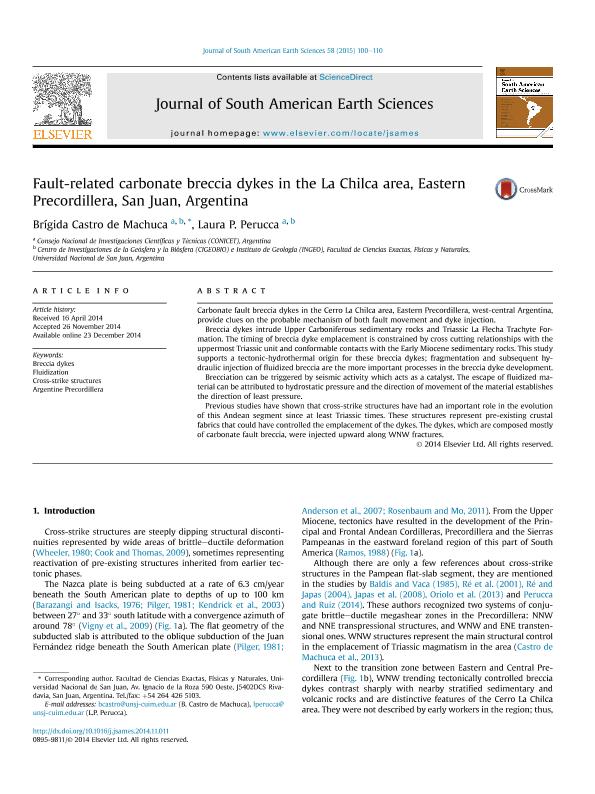Artículo
Fault-related carbonate breccia dykes in the La Chilca area, Eastern Precordillera, San Juan, Argentina
Fecha de publicación:
12/2014
Editorial:
Elsevier
Revista:
Journal of South American Earth Sciences
ISSN:
0895-9811
Idioma:
Inglés
Tipo de recurso:
Artículo publicado
Clasificación temática:
Resumen
Carbonate fault breccia dykes in the Cerro La Chilca area, Eastern Precordillera, west-central Argentina, provide clues on the probable mechanism of both fault movement and dyke injection. Breccia dykes intrude Upper Carboniferous sedimentary rocks and Triassic La Flecha Trachyte Formation. The timing of breccia dyke emplacement is constrained by cross cutting relationships with the uppermost Triassic unit and conformable contacts with the Early Miocene sedimentary rocks. This study supports a tectonic-hydrothermal origin for these breccia dykes; fragmentation and subsequent hydraulic injection of fluidized breccia are the more important processes in the breccia dyke development. Brecciation can be triggered by seismic activity which acts as a catalyst. The escape of fluidized material can be attributed to hydrostatic pressure and the direction of movement of the material establishes the direction of least pressure. Previous studies have shown that cross-strike structures have had an important role in the evolution of this Andean segment since at least Triassic times. These structures represent pre-existing crustal fabrics that could have controlled the emplacement of the dykes. The dykes, which are composed mostly of carbonate fault breccia, were injected upward along WNW fractures.
Archivos asociados
Licencia
Identificadores
Colecciones
Articulos(CIGEOBIO)
Articulos de CENTRO DE INVESTIGACIONES DE LA GEOSFERA Y BIOSFERA
Articulos de CENTRO DE INVESTIGACIONES DE LA GEOSFERA Y BIOSFERA
Articulos(SEDE CENTRAL)
Articulos de SEDE CENTRAL
Articulos de SEDE CENTRAL
Citación
Castro, Brigida Marta Ester; Perucca, Laura Patricia A.; Fault-related carbonate breccia dykes in the La Chilca area, Eastern Precordillera, San Juan, Argentina; Elsevier; Journal of South American Earth Sciences; 58; 12-2014; 100-110
Compartir
Altmétricas




